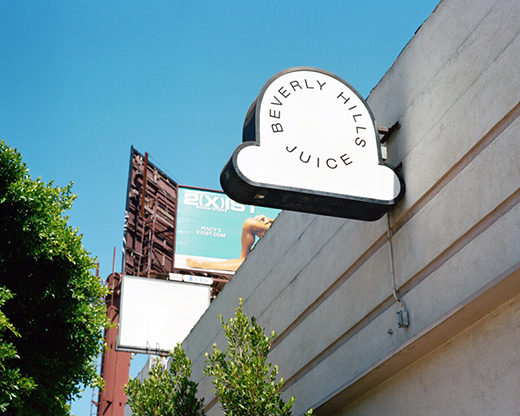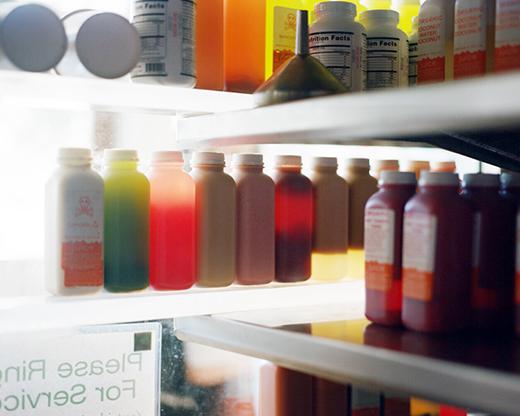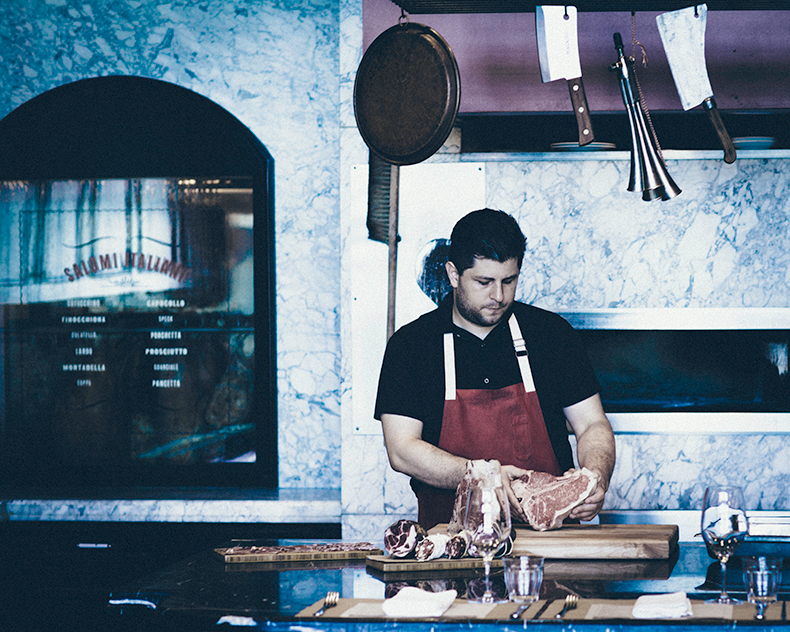David Otto’s life-changing moment begins in the same way as many revelatory ideas of the 1960s do, as part of a hallucinogenic drug experience. “I was on the tail-end of a psychedelic Saturday and I started to come on again,” says Otto, who was seated at Chuck’s Steak House, a music industry hangout on West Third Street at the time. “I had ordered a steak and started to cut into it, and the steak morphed into this huge, ferocious-looking bull. I had a mental communication with this creature, and I decided that I wasn’t going to eat meat anymore. And I committed to becoming a vegetarian.”
The year was 1967. Otto didn’t immediately transform into your garden-variety vegetarian back then. Prompted by his desire to eat more healthfully, the Los Angeles native began dipping his toes into the world of juicing. By the mid-seventies, he was not only a full-blown vegan and juicing convert; he was also ready to share his knowledge with the rest of the city. In 1975, Otto debuted Beverly Hills Juice Club, now known as Beverly Hills Juice–a go-to fresh juice spot on Beverly Boulevard that has won the hearts, minds and palates of local health-seekers for more than 39 years, and has earned the slight, sharp 78 year-old the moniker of Juice Guy.
As he reflects on his journey, Otto is perched on the edge of the open trunk of his station wagon, parked in the lot behind the juice bar. It’s late afternoon, a baseball game is on the radio in the background, and it’s nearing the end of a shift for some of his employees. “Manana, David!” one of them calls out to him, a sentiment which he echoes in return.
“Growing up, I ate real simple,” muses Otto, who was reared primarily on a staple diet of steak, salad, and potatoes, thanks, in part, to his father who ran a local steakhouse until it shuttered in 1954. A Los Angeles native, Otto was born in 1936 and spent his formative years at military school until fifth grade in 1945, when World War II ended. His mother and stepfather married at that time, and bought a house in Studio City. Otto attended junior high in West Hollywood, and graduated from Hollywood High.
Otto dabbled in various jobs and college after graduation, but quickly fell in with his mother’s line of business, as a booking agent for bands around Los Angeles. It was in 1967, in the midst of his music career and the unhealthy lifestyle choices that often come with it, when Otto had his hallucinatory vegetarian epiphany. “ I was working with my mother, and she was really freaked out that I wanted to eliminate meat from my diet. I started reading more about becoming a vegetarian. I bought a Champion juicer and made juice at home. It got to the point where it just became part of my life.”


Soon, Otto became known amongst friends for his healthful juice concoctions, which, in the early ‘70s, were a hard-to-find treat to find around town, with the exception of LaHood’s in Grand Central Market downtown and Bruce’s Juices in Redondo Beach, (run by a local surfer who peddled his wares when he wasn’t out catching waves). Seeking to fill a void in the market and to provide fellow health nuts with a consistent alternative, Otto debuted Beverly Hills Juice Club on Santa Monica Boulevard in 1975, which moved to its present day location on Beverly Boulevard in West Hollywood.
In the 39 years since opening its doors, Otto’s hydraulic-pressed juices have developed a cult following, as evident by the line that regularly snakes down the street outside the tiny storefront. Beverly Hills Juice’s popularity is also evident in the number of customers who have been loyal patrons since the day it opened. Even one of Otto’s employees, Hal, has been with the Juice Guy since the beginning, with the exception of a few hiatuses to pursue his career as an artist.
Things really changed five years ago, says Otto, with the release of the juice bar’s Banana Manna blend. “It’s a combo of organic bananas, nuts and sunflower seeds that we blend it together,” he says. “It comes out just like ice cream, and we use it just like ice cream—and that’s the big attraction.” Customers also flock to the spot for other signature offerings, including the Big Ten—a potent combo of carrot juice, celery, parsley, spinach, kale and sprouts.
Along with his wife, Jen, and three children, Otto practices what he preaches. A typical day start out with a vegetable juice, or a dish Banana Manna, followed by quinoa and beans, or something similar, from nearby vegan restaurant Real Food Daily, or a Yo Soy Mucho Mexican-inspired bowl from Café Gratitude. The day ends over a simple meal of salad, lentils or a baked potato, which he often enjoys with Jen at their home in Laurel Canyon.
Otto is also actively involved in the day-to-day operations of the shop. Every morning after his workout (his day begins at 4 a.m.), Otto heads to the juice bar, or downtown, where he picks up pint bottles for the shop. On Wednesdays and Saturdays, he makes his way to the Santa Monica Farmers’ Market where he seeks out seasonal organic produce. When the shop first opened, Otto would pick up organic items daily; now the juice bar does so much volume, it takes in regular deliveries of fresh fruit and vegetables. “I used to have a VW van that we would load up in the ‘70s, now I would have to have a big truck, we go through so much stuff,” he says.
It’s his quest for the best, organic produce that Otto believes makes his juice bar so popular, despite the proliferation of similar purveyors that has popped up in recent years. “We’ve always maintained, to make the best juice, you have to use the best produce. We go to great extremes for that,” he notes.
“We all know what’s bad for us, so don’t find yourself a slave to these things,” says Otto. “The secret to great health? It’s not about what you eat, its what you don’t eat.”
—
RETURN TO THE HOME PAGE
VISIT CITIZENSOFHUMANITY.COM





